
Have you ever dreamed of being a bird soaring freely in the sky? Eagles are amongst the largest birds on the planet. They have amazing eyesight, lightning speed, and can detect prey up to 3.2 km away. As the national bird of some countries, they symbolize freedom, strength, courage, and immortality for generations. So if you ever dream of being a bird, aspire to become the largest eagle in the world!
Some of the eagle species today, such as the bald eagle, are the most protected. Hunting or killing them will penalize you for up to 5 years in prison, and be made to pay a fine of up to $250,000. Excluding man from the equation, however, eagles take the top spot in the food chain, with some species feeding on big prey such as monkeys, goats, and sloths. If you want to learn more about this extraordinary bird, come and fly with our list of the 10 Largest Eagles in the World, plus some of their most interesting facts.
Haast’s Eagle
Wingspan: Between 2 and 3 meters
Weight: Up to 15 kg
Location: South Island of New Zealand
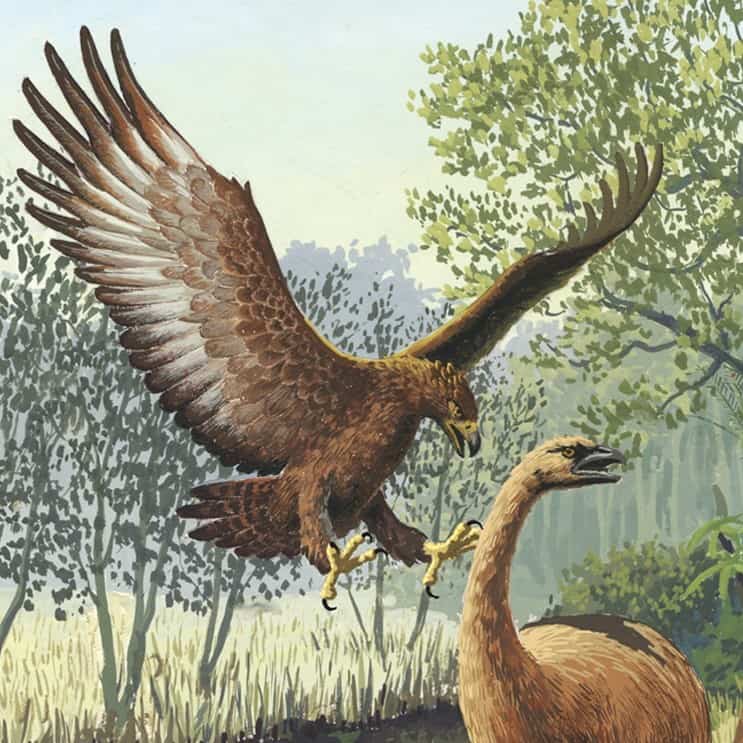
The Haast’s eagle had long been wiped out but it was the largest breed to ever exist. Unfortunately, the destruction of their homes and depletion of their prey caused their extinction 5 centuries ago. The Haast’s eagle preyed on big, flightless bird species like the moa (an extinct flightless bird endemic to New Zealand). Since they weighed on the heavy side, they jumped as a means to take off from the ground, which was also thanks to their powerful legs.
Steller’s Sea Eagle
Wingspan: 1.9 to 2.5 meters
Weight: 4.9 to 6 kg (male) / 6.2 to 9.5 kg (female)
Country: Russia
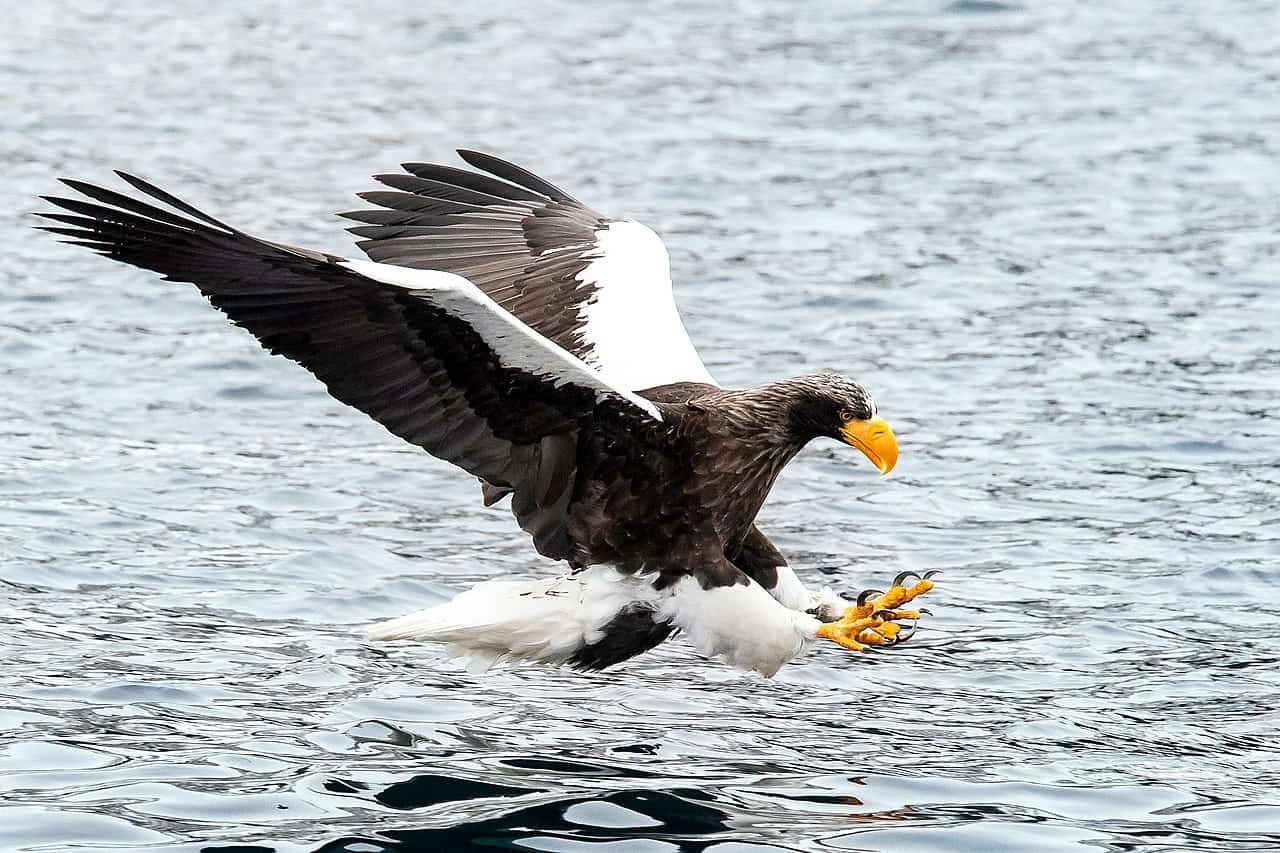
The Steller’s Sea eagle essentially consumes aquatic animals, even birds. A huge population of this eagle (around 3,200 breeding pairs) lives in the Kamchatka Peninsula in Far Eastern Russia with a lifespan of 20 to 25 years. Sadly, the IUCN recorded these eagles as ‘vulnerable’ because perils to their existence, such as pollution and the destruction of their homes, continue to happen even today.
Every winter, numerous Steller’s Sea eagles migrate from their breeding grounds to Japan, while some can go as far as Korea. Some of them do not migrate, and instead, they move to open water as winter approaches. In fact, the Steller’s Sea eagle is one of Japan’s National Treasures.
The Steller’s Sea eagle makes a deep barking cry that sounds like “Ra-ra-ra-raurau.” The sound they produce during their mating call resembles a seagull’s heavy voice.
White-Tailed Eagle
Wingspan: 2 to 2.4 meters
Weight: 3.5 to 7 kg
Location: Russia, Norway, and some parts of Eurasia
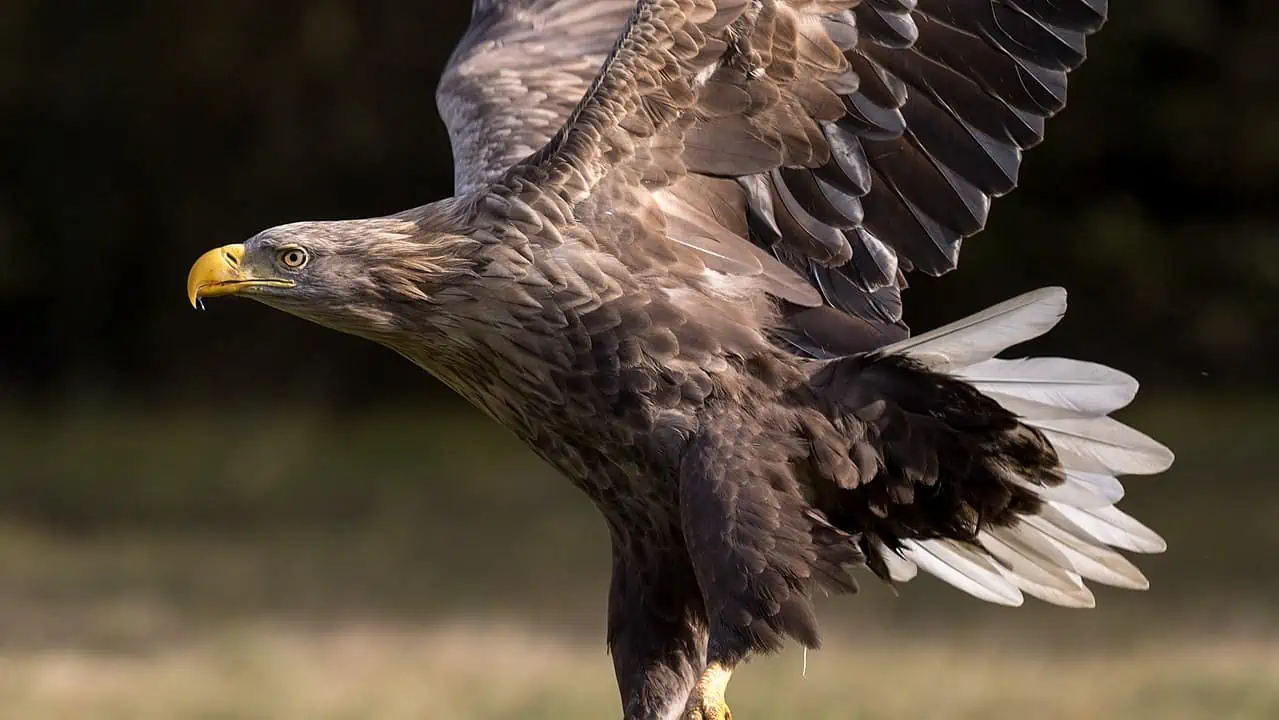
The white-tailed eagle is another large species of eagle that’s widely distributed across temperate Eurasia. White-tailed eagles often live most of the year near huge bodies of open water, such as coastal saltwater areas and inland freshwater, including lakes, wetlands, rivers, and bogs. In addition, they need a sufficient food supply and old-growth trees or sea cliffs for nesting. Many people consider the white-tailed eagle as the cousin of the bald eagle, which is the USA’s national bird.
According to estimates, the white-tailed eagle’s population is around 20,000 to 50,000. On average, this eagle can fly about 43.5 mph (or 69 kph). Most of the day, the white-tailed eagles spend their time perched on trees or crags, and it’s not uncommon for them not to move there for several hours, especially if the weather is not very good. This breed is a versatile and opportunistic hunter and a carrion feeder (scavenger). They may steal food from other birds or mammals in the wild, or they may hunt their own food, as well, which includes fish, smaller types of birds, rabbits, and hares.
Wedge-Tailed Eagle
Wingspan: 1.7 to 2.3 meters
Weight: 3.2 to 5.3 kg
Location: Australia, Tasmania, and New Guinea
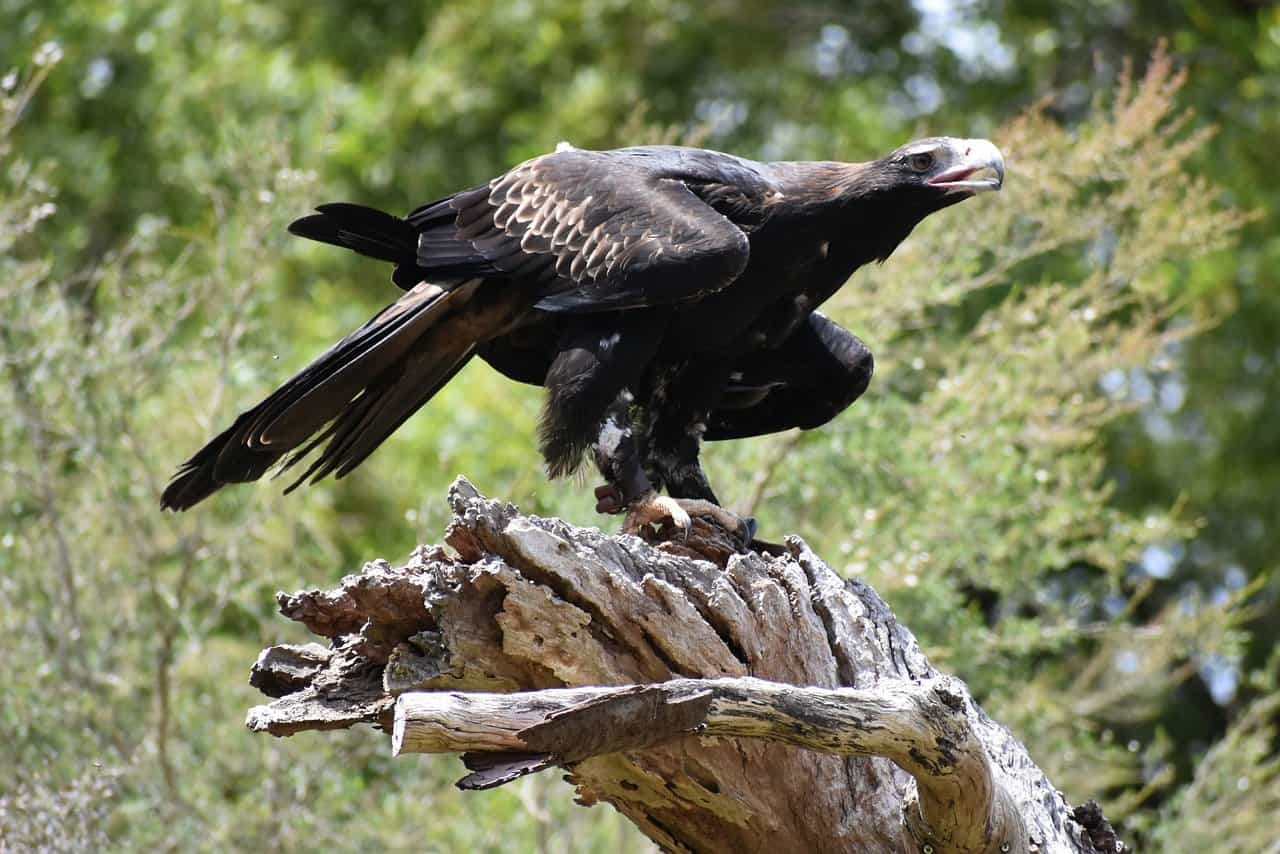
The wedge-tailed eagle is the biggest predator bird in Australia. This eagle loves to fly very high, soaring for hours in more than 1,800 m or 5,900 ft. The wedge-tailed eagle has a reputation to be the only bird to attack hang gliders and paragliders, but theory suggests it’s because they are defending their territory. Moreover, there has been news that they have torn down drones surveying the mining activities in Australia.
When food is limited, “sibling rivalry” is taken to a whole new level. The bigger eagle chick may devour its smaller sibling. Usually, a female wedge-tailed eagle lays her eggs a few days apart from each other, with the incubation starting when the first one comes out. Meanwhile, the remaining eggs will hatch after a day or two. Thus, the first hatchling usually becomes larger, giving it more chances of viability, compared to the younger ones. These young wedge-tailed eagles are light brown in color. And as they get old, their feathers get more pigmented.
Golden Eagle
Wingspan: 1.8 to 2.3 meters
Weight: 3.6 to 6.8 kg (female) / 2.7 to 4.6 kg (male)
Location: Europe, Asia, North Africa, and North America
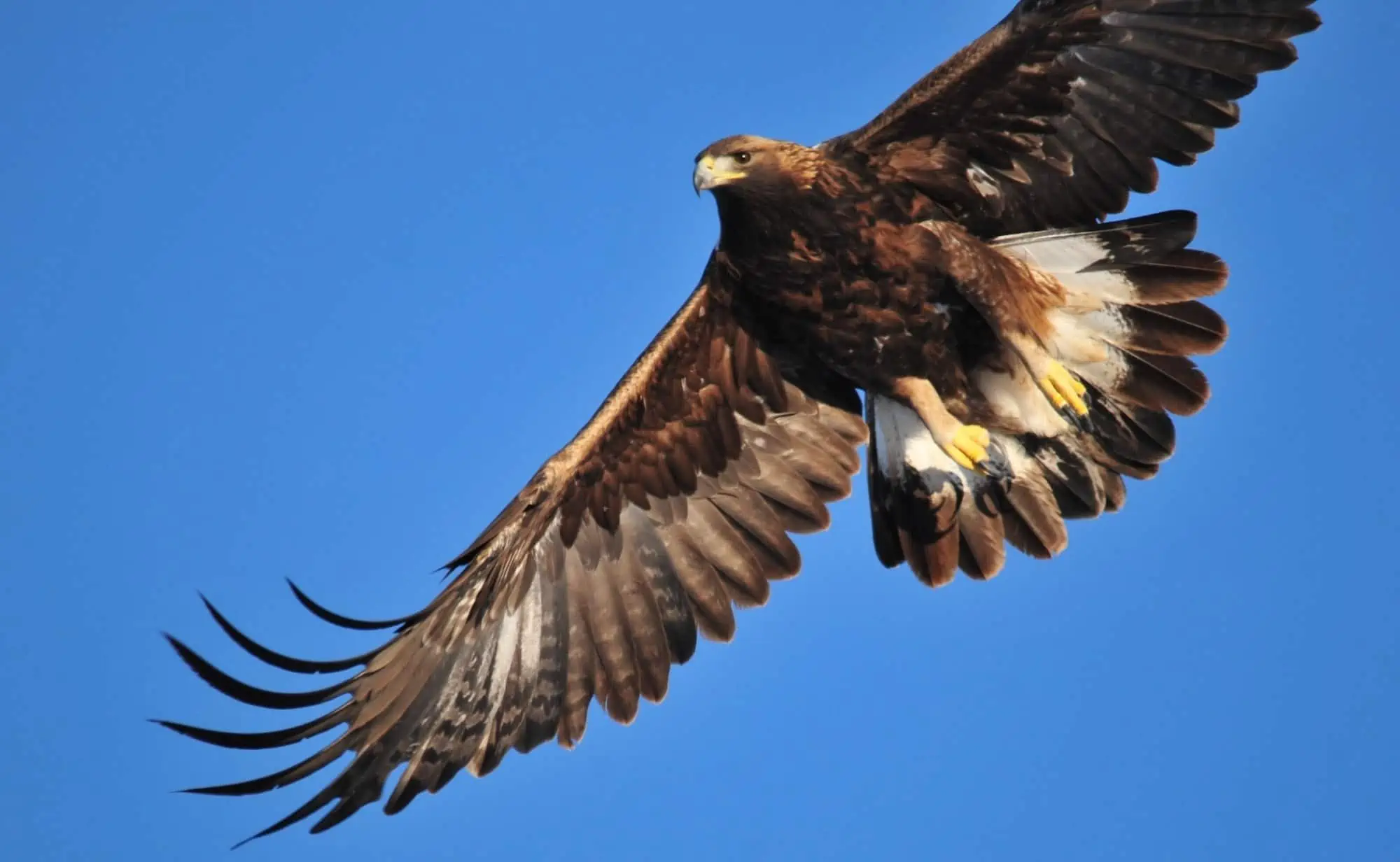
Mexico, Albania, and Germany hold the golden eagle as their national bird. Known for its swiftness and strength, North America also considers it as its biggest predator bird. Considered the best fliers among eagles, the golden eagle can fly at the speed of 320 km/h, making it the fastest in its class. It’s equipped with broad, long wings, with a finger-like indentation on the tips of the wing.
Golden eagles take advantage of their agility and pointy claws to pluck small animals from the ground. They may even on other animals, including reptiles and insects. Historically, golden eagles have been able to attack a full-grown deer, that’s why some ranchers before used to kill a lot of these birds since they worry that they would attack their livestock as well. Studies, however, showed that the golden eagle’s impact on bigger animals was minimal. Currently, the IUCN notes the existence of golden eagles as ‘not vulnerable’ as they are highly protected by law.
Philippine Eagle
Wingspan: 1.9 to 2.2 meters
Weight: 4.5 to 8.1 kg
Location: Philippines
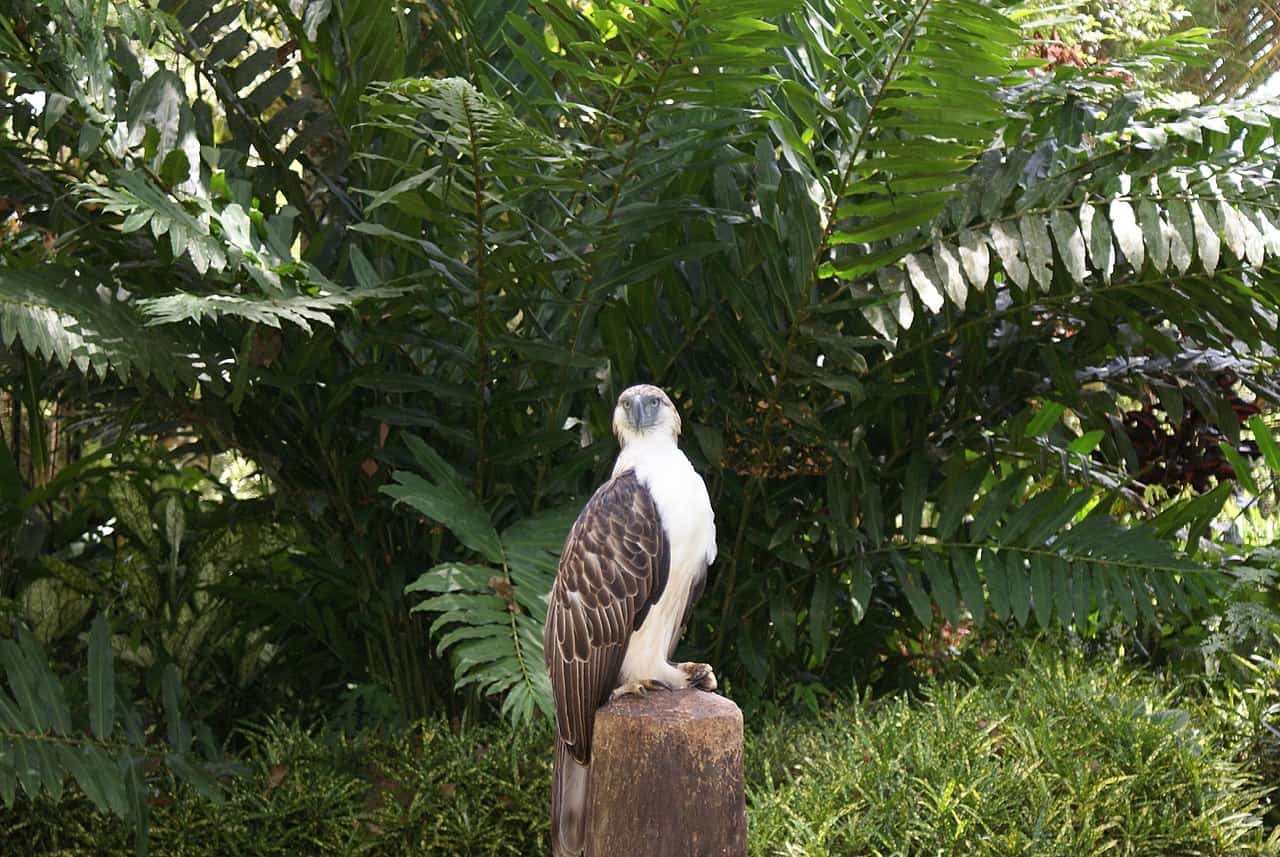
Native to the tropical forests of the Philippines, this eagle is the most massive one there is. They are also notorious for eating monkeys. This breed is scattered in the three major islands of the country, with most of its population living in the island of Mindanao. Moreso, they can be spotted in mostly mountainous areas.
The name Philippine monkey-eating eagle came from the belief that this eagle feeds on monkeys exclusively. According to the first examined specimen, researchers found undigested pieces of monkey in its stomach. However, like your usual birds of prey, the Philippine eagle takes its chances on animals that are bountiful in a specific local area. Meanwhile, the Philippine eagle is critically endangered, and hunting or killing it is punishable under the Philippine law by more than 10 years in prison, plus heavy fines.
Harpy Eagle
Wingspan: 2 meters
Weight: 6 to 9 kg (female) / 4 to 6 kg male (male)
Location: South America
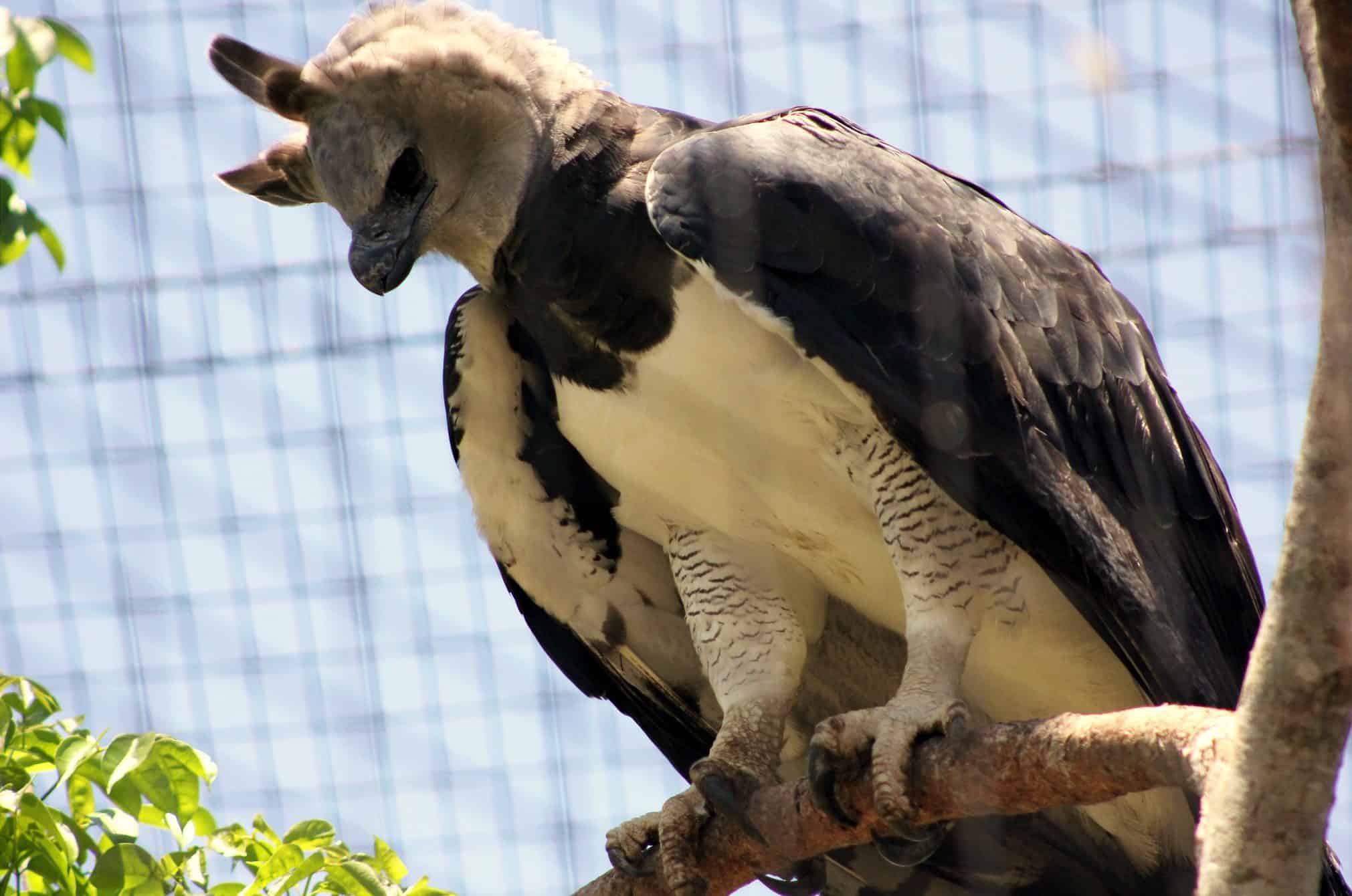
The harpy eagle is quite common in Brazil, but its presence is distributed all over South America. You’ll find one spending time on top of a tree’s crown in tropical jungles. This large eagle species needs big trees and spacious territories in order for its population to grow. Harpies create their nests in the highest trees of the jungle. They build their nests with a large number of sticks, branches, plants, and animal fur. A fully constructed nest of a harpy can be big enough for a full-grown human to sleep comfortably.
Harpies hunt during the day. However, unlike other eagle species, they would usually stay patient and sit on a perch for a long time, waiting for prey to come along instead. Harpy eagles eat snakes, including a variety of mammals and other birds. The deadly talons of this eagle can exert massive pressure (over 50 kg) and may crush the bones of its prey, killing its victim instantly.
Martial Eagle
Wingspan: 1.88 to 2.6 meters
Weight: 3 to 6 kg
Location: Savannah and thornbush areas of Africa south of the Sahara, from Senegal to Somalia and south to the Cape
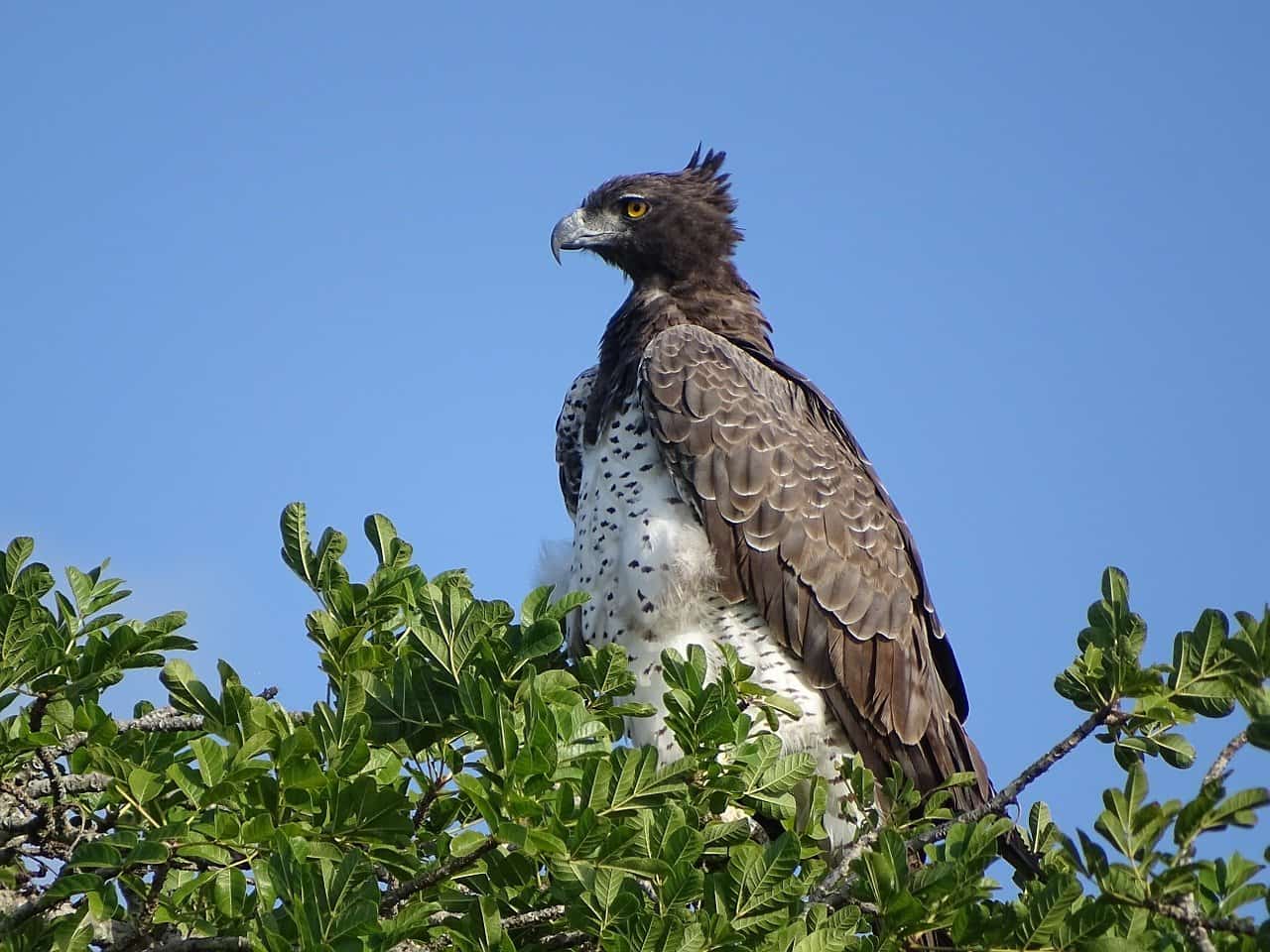
The martial eagle is one of the most impressive eagles on the planet. It is quite the predator in Africa, too. Its diet includes a variety of mammalian species such as small antelopes, domestic goats, lambs, and hyrax. The martial eagle hunts quietly and secretively, they spend a good amount of their time flying and blending well into the sky. They don’t often flap their wings, but simply glide high in the sky. When their prey in the savannah doesn’t see them as a threat, that’s when they suddenly dive. Speed is their “trump card,” that’s why many preys don’t expect a killer to drop from so high in the sky.
Bald Eagle
Wingspan: 1.8 to 2.3 meters
Weight: 3 to 6.3 kg
Location: North America
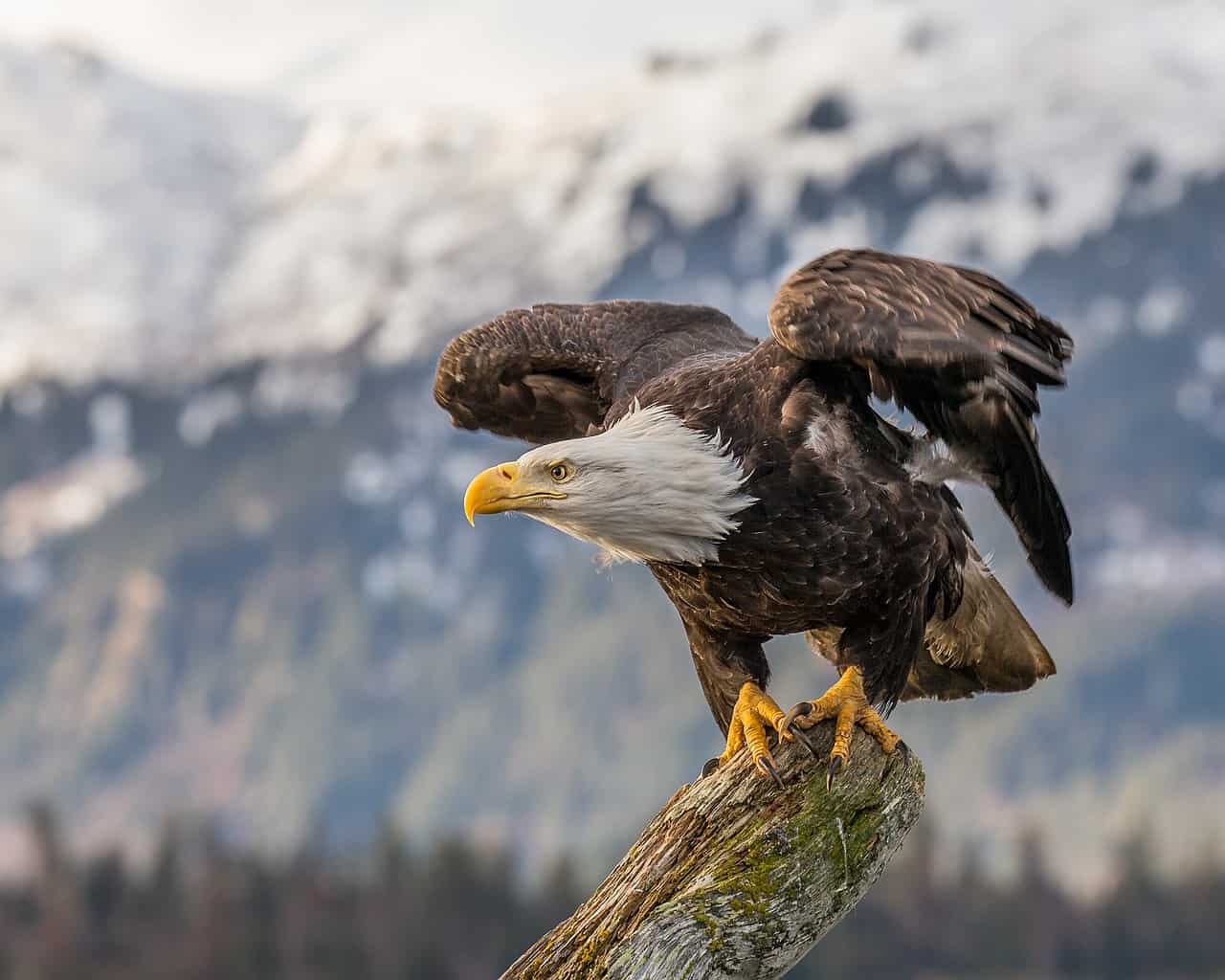
In contrast to its name, bald eagles actually have feathers. Because of their white head, they seemingly come across as bald, hence the name. The United States considers it their national bird for its unmatched good looks and the freedom it represents. Moreover, the bald eagle symbolizes the courage and liberty of the country.
Did you know that the bald eagle’s existence almost ceased during the 80s? Fortunately, in the year 1995, its population has recovered extremely well and is no longer endangered. Furthermore, it’s a sea eagle solely native to the US. Normally, its scope surrounds the majority of North America down to Mexico’s north. Lastly, the bald eagle’s longevity lasts up to at least two decades in its natural habitat.
Verreaux’s Eagle
Wingspan: 1.8 to 2.3 meters
Weight: 3 to 5 kg
Location: Eastern Africa, West Africa, the Arabian Peninsula, and the southern Middle East
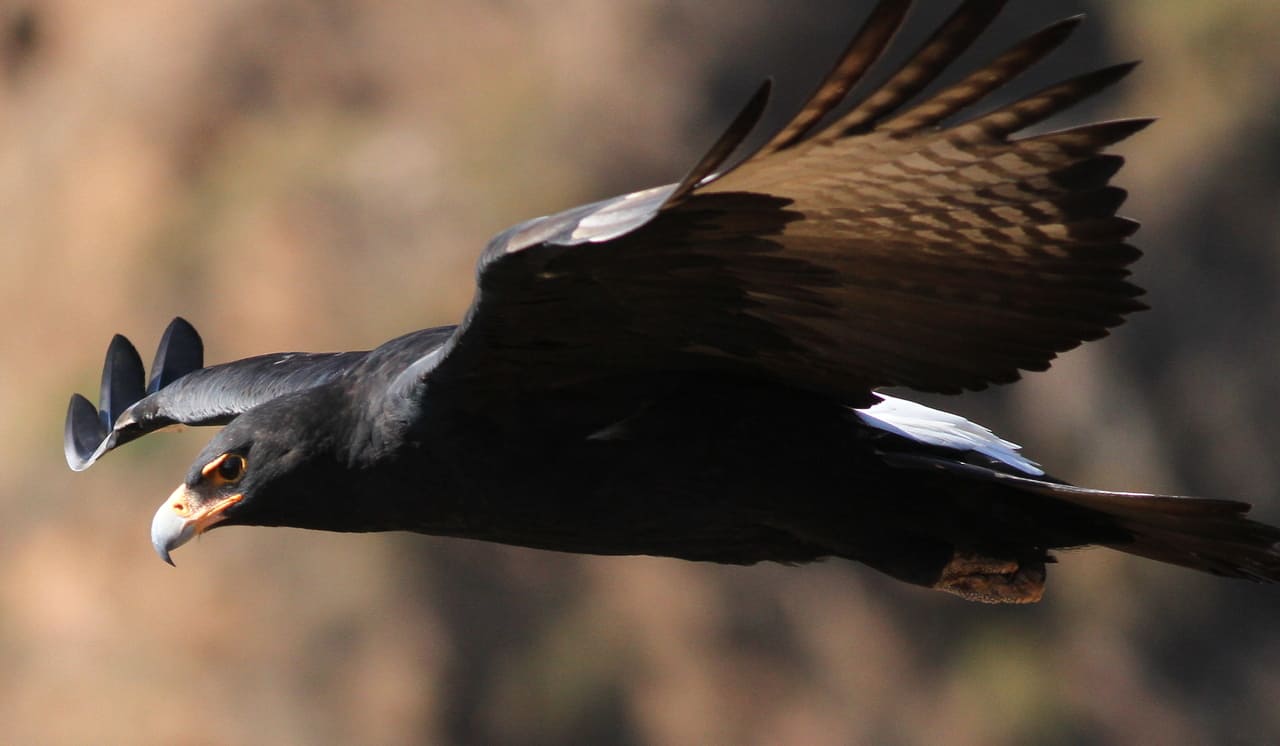
Called the ‘black eagle’, the Verreaux eagle has a distinct branding on its back that looks like the letter V, as well as white streaks on its feathers. Compared to other species of eagle, the Verreaux’s Eagle usually creates their nests on cliff ledges rather than trees. Their nest is pretty large, measuring more than 5 ft across (up to 3 ft deep), and is made of sticks with an inner lining of green leaves.
The Verreaux’s Eagle’s favorite prey or “priority meal” is the rock hyrax but they can also feast on hares, rabbits, ground squirrels, antelopes, meerkats, mongooses, cane rats, bushbabies, lambs, and young goats or kids. There are a lot of wild predators that are also attracted to rock hyraxes which lead to hunting competition with the Verreaux’s eagles and a decline in the population of the rock hyraxes.
The Verreaux’s eagle belongs to a large number of predator birds known as “booted eagles.” These eagles have a fully feathered tarsi, which means that their legs are covered with feathers all the way down to the feet.
Was this page helpful?
Our commitment to delivering trustworthy and engaging content is at the heart of what we do. Each fact on our site is contributed by real users like you, bringing a wealth of diverse insights and information. To ensure the highest standards of accuracy and reliability, our dedicated editors meticulously review each submission. This process guarantees that the facts we share are not only fascinating but also credible. Trust in our commitment to quality and authenticity as you explore and learn with us.
